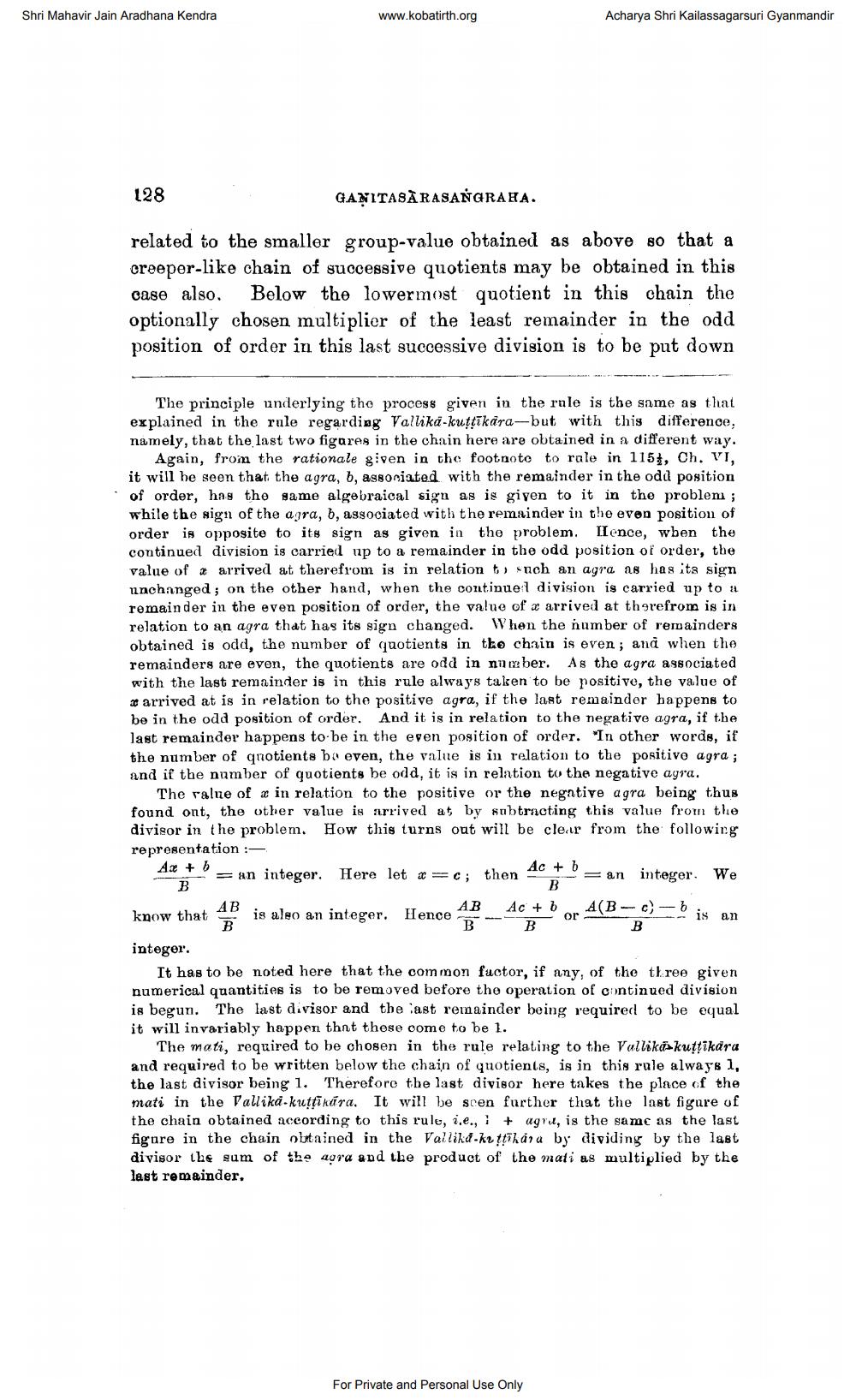________________
Shri Mahavir Jain Aradhana Kendra
128
www.kobatirth.org
GANITASARASANGRAHA.
related to the smaller group-value obtained as above so that a creeper-like chain of successive quotients may be obtained in this case also. Below the lowermost quotient in this chain the optionally chosen multiplier of the least remainder in the odd position of order in this last successive division is to be put down
The principle underlying the process given in the rule is the same as that explained in the rule regarding Vallika-kuṭṭikara-but with this difference, namely, that the last two figures in the chain here are obtained in a different way. Again, from the rationale given in the footnote to rale in 115, Ch. VI, it will be seen that the agra, b, associated with the remainder in the odd position of order, has the same algebraical sign as is given to it in the problem ; while the sign of the agra, b, associated with the remainder in the even position of order is opposite to its sign as given in the problem. Hence, when the continued division is carried up to a remainder in the odd position of order, the value of a arrived at therefrom is in relation to such an agra as has its sign unchanged; on the other hand, when the continued division is carried up to a remainder in the even position of order, the value of a arrived at therefrom is in relation to an agra that has its sign changed. When the number of remainders obtained is odd, the number of quotients in the chain is even; and when the remainders are even, the quotients are odd in number. As the agra associated with the last remainder is in this rule always taken to be positive, the value of a arrived at is in relation to the positive agra, if the last remainder happens to be in the odd position of order. And it is in relation to the negative agra, if the last remainder happens to be in the even position of order. In other words, if the number of quotients be even, the value is in relation to the positive agra; and if the number of quotients be odd, it is in relation to the negative agra.
AB B
The value of x in relation to the positive or the negative agra being thus found ont, the other value is arrived at by subtracting this value from the divisor in the problem. How this turns out will be clear from the following representation:
Ax + b B know that
= an integer. Here let x = c; then
Acharya Shri Kailassagarsuri Gyanmandir
is also an integer. Hence
Ac + b B
For Private and Personal Use Only
an integer. We
AB Ac + b A(B c) b
or
B
B
B
is an
integer.
It has to be noted here that the common factor, if any, of the three given numerical quantities is to be removed before the operation of continued division is begun. The last divisor and the last remainder being required to be equal it will invariably happen that these come to be 1.
The mati, required to be chosen in the rule relating to the Vallika kuṭṭikāra and required to be written below the chain of quotients, is in this rule always 1, the last divisor being 1. Therefore the last divisor here takes the place of the mati in the Vallika-kuṭṭīkāra. It will be seen further that the last figure of the chain obtained according to this rule, i.e., agra, is the same as the last figure in the chain obtained in the Vallikd-kettihara by dividing by the last divisor the sum of the agra and the product of the mati as multiplied by the last remainder.




